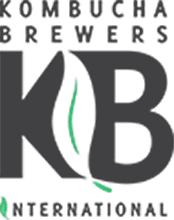Microbial Presence and Organic Acid Content of Commercial Kombucha
Authors:
K Leonard, L Elson-Schwab, K Lund, R R Achterman
Abstract:
This project aims to identify the presence and abundance of predominant probiotic microorganisms and organic acids in four different commercial brands of kombucha. We plated serial dilutions of the kombucha on selective media types to identify concentration of microorganisms including fungi (YEPD), Lactobacilli (MRS), and nonselective medium to promote bacterial growth (LB). Predominant colonies were examined by Gram stain and microscopy to determine (1) whether they were yeast or bacteria, and (2) bacterial cell wall type. HPLC analysis was used to identify the presence and abundance of organic acids, including acetic acid, lactic acid, propionic acid, glucuronic acid, gluconic acid. Prevalent colony types will be examined by sequence analysis to identify the organism at the species level.Total microbial content varied between brands (175,248,000 CFU/16oz - 4,027,000,000 CFU/16oz) and within the same brand. Microscopy results indicate all brands predominantly contain yeast, and one brand contains yeast and Gram-negative and Gram-positive bacteria. Interestingly, the predominant colony type was yeast, even on a medium we believed to be selective for Lactobacilli. HPLC analysis confirmed the presence of organic acids in kombucha, with Townshend's brand having the highest average total organic acid content and the Revive brand having the lowest. There was high variability in organic acid levels between bottles of the Townshend's brand. GT's Enlightened Original brand contained acetic and lactic acid levels higher than claimed on the label whereas Revive brand contained less gluconic acid than claimed on the label. In conclusion, there was high variability of microbial content and organic acid levels in all brands of kombucha tested.
Keywords: acetic acid, acid content, gluconic acid, glucuronic acid, lactic acid, organic acids
Citation: POSTER - This project was funded by the Bastyr Center for Student Research.(BUSCR-Y4-008).
Date Updated: January 21, 2021
 0 people like this study.
0 people like this study.